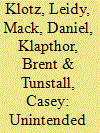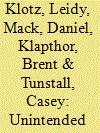|
|
|
Sort Order |
|
|
|
Items / Page
|
|
|
|
|
|
|
| Srl | Item |
| 1 |
ID:
119787


|
|
|
|
|
| Publication |
2013.
|
| Summary/Abstract |
Passive design strategies are among the most cost-effective methods to reduce energy consumption in buildings. However, the prevalence of these strategies in existing U.S. homes is not well understood. To help address this issue, this research evaluated a nationally-representative sample of 1000 existing homes distributed geographically across the U.S. Using satellite images, each building was evaluated for three passive design strategies: orientation, roof color, and level of shading. Several statistically significant regional trends were identified. For example, existing homes in the High Plains, Ohio Valley, Northwest, and Southern regions show a statistically significant trend towards orientation in the East-West direction, an effective passive design strategy. Less intuitively, in terms of what would seem to be optimal passive design, buildings in the High Plains and Ohio Valley generally have lighter roof colors than buildings in the warmer Southwest region. At the national level, no statistically significant trends were found towards the passive design strategies evaluated. These trends give us no reason to believe they were a major consideration in the design of existing homes. Policy measures and education may be required to take advantage of the opportunity for cost-effective energy savings through more widespread passive solar design.
|
|
|
|
|
|
|
|
|
|
|
|
|
|
|
|
| 2 |
ID:
096722


|
|
|
|
|
| Publication |
2010.
|
| Summary/Abstract |
In the U.S., where buildings account for 40% of energy use, commercial buildings use more energy per unit area than ever before. However, exemplary buildings demonstrate the feasibility of much better energy performance at no additional first cost. This research examines one possible explanation for this inconsistency. The aim is to investigate whether the anchoring bias, which refers to our tendency to gravitate towards a pre-defined standard regardless of its relevance, influences energy performance goals in building design. The scope examines professionals who help set energy performance goals for U.S. buildings. Prior to being asked to set an energy performance goal, these professionals were randomly directed to one of three series of questions. One series set an anchor of 90% energy reduction beyond standard practice, one set a 30% anchor, and one set no anchor. Respondents exposed to the 90% anchor, and respondents exposed to no anchor at all, set higher energy performance goals than respondents exposed to the 30% anchor. These results suggest that building rating systems that only reward incremental energy improvements may inadvertently create anchors, thereby discouraging more advanced energy performance goals and inhibiting energy performance that is technically and economically feasible.
|
|
|
|
|
|
|
|
|
|
|
|
|
|
|
|
| 3 |
ID:
097515


|
|
|
|
|
| Publication |
2010.
|
| Summary/Abstract |
In the U.S., where buildings account for 40% of energy use, commercial buildings use more energy per unit area than ever before. However, exemplary buildings demonstrate the feasibility of much better energy performance at no additional first cost. This research examines one possible explanation for this inconsistency. The aim is to investigate whether the anchoring bias, which refers to our tendency to gravitate towards a pre-defined standard regardless of its relevance, influences energy performance goals in building design. The scope examines professionals who help set energy performance goals for U.S. buildings. Prior to being asked to set an energy performance goal, these professionals were randomly directed to one of three series of questions. One series set an anchor of 90% energy reduction beyond standard practice, one set a 30% anchor, and one set no anchor. Respondents exposed to the 90% anchor, and respondents exposed to no anchor at all, set higher energy performance goals than respondents exposed to the 30% anchor. These results suggest that building rating systems that only reward incremental energy improvements may inadvertently create anchors, thereby discouraging more advanced energy performance goals and inhibiting energy performance that is technically and economically feasible.
|
|
|
|
|
|
|
|
|
|
|
|
|
|
|
|
|
|
|
|
|